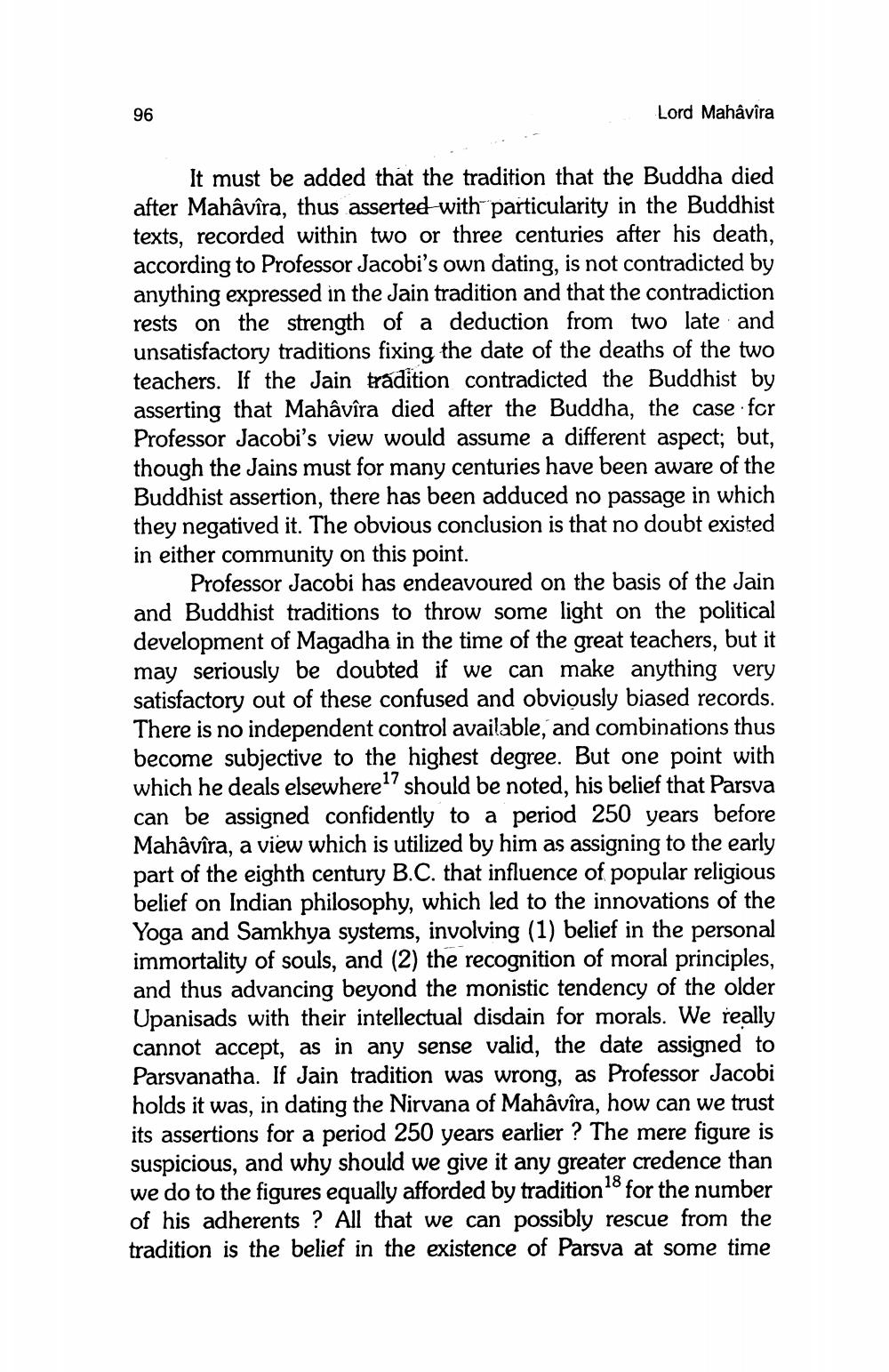________________
96
Lord Mahavira
It must be added that the tradition that the Buddha died after Mahâvîra, thus asserted with particularity in the Buddhist texts, recorded within two or three centuries after his death, according to Professor Jacobi's own dating, is not contradicted by anything expressed in the Jain tradition and that the contradiction rests on the strength of a deduction from two late and unsatisfactory traditions fixing the date of the deaths of the two teachers. If the Jain tradition contradicted the Buddhist by asserting that Mahâvîra died after the Buddha, the case for Professor Jacobi's view would assume a different aspect; but, though the Jains must for many centuries have been aware of the Buddhist assertion, there has been adduced no passage in which they negatived it. The obvious conclusion is that no doubt existed in either community on this point.
Professor Jacobi has endeavoured on the basis of the Jain and Buddhist traditions to throw some light on the political development of Magadha in the time of the great teachers, but it may seriously be doubted if we can make anything very satisfactory out of these confused and obviously biased records. There is no independent control available, and combinations thus become subjective to the highest degree. But one point with which he deals elsewhere should be noted, his belief that Parsva can be assigned confidently to a period 250 years before Mahâvîra, a view which is utilized by him as assigning to the early part of the eighth century B.C. that influence of popular religious belief on Indian philosophy, which led to the innovations of the Yoga and Samkhya systems, involving (1) belief in the personal immortality of souls, and (2) the recognition of moral principles, and thus advancing beyond the monistic tendency of the older Upanisads with their intellectual disdain for morals. We really cannot accept, as in any sense valid, the date assigned to Parsvanatha. If Jain tradition was wrong, as Professor Jacobi holds it was, in dating the Nirvana of Mahâvîra, how can we trust its assertions for a period 250 years earlier ? The mere figure is suspicious, and why should we give it any greater credence than we do to the figures equally afforded by tradition for the number of his adherents ? All that we can possibly rescue from the tradition is the belief in the existence of Parsva at some time




